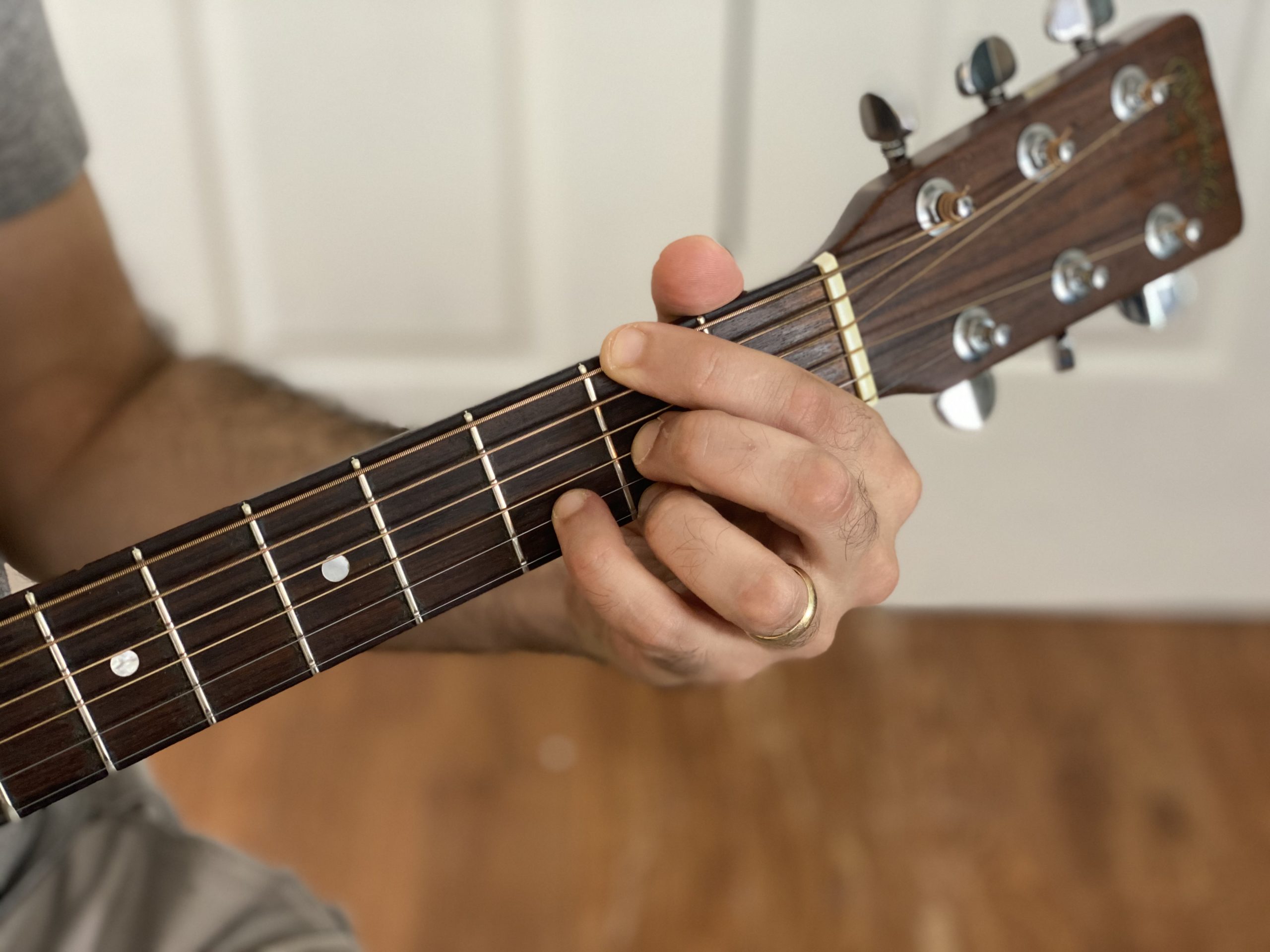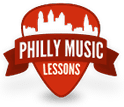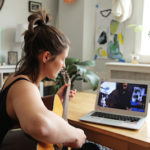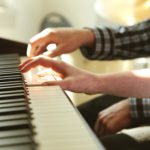
How to Play Slash Chords
Part 1: What are Slash Chords?
You see them in almost every piece of music, they’re plastered all over the internet. Yet, most guitar players have no idea what they mean or how to play them. It’s one of the most repeated questions students ask me over and over again.
Hi, Professor Kleiman at your service: Philly Music Lessons’ resident fretted/string instrument guru. You know; Guitar, Bass, Mandolin, Banjo Ukulele, Sitar. Strings AND Frets. My hope is that this can become a regular column and with your help, questions, suggestions and comments, it will. I will try and debunk all the misinformation that’s out there or ‘up there’ in the cloud.
But let’s get back to the question at hand:
C/G or Em/B or even just some space and /G#
What do they mean????? Do you play a ‘C’ chord and then real fast change to ‘G’??? Do I play an ‘E minor’ chord a ‘B’ chord together??? Do I play a G# chord at some point???? The answer to all of them is NOPE.
I’ll answer this question with another. In a live band recording or performance, what other instruments are playing? Let’s break it down to the smallest group: The Power Trio- a Guitar player, a Drummer and a Bass player.
Their Roles:
Drummer: they bang and keep the beat. Guitar: they also bang but play chords – How ‘bout that Bass player: what is their job???
They sure don’t play chords. No, they play the bottom. They play the Bass. They play the lowest sound: THE ROOTS!!!!! That’s their job. You could put together the hottest drummer and guitar player you know but if the bass doesn’t do it’s job and play the ROOTS you got nothin’. Absolutely none of the music will sound right. What are the ROOTS or what are the ROOT notes?? That’s easy.
It’s the most important note in any chord and it’s easy to figure out the root note. All chords derive their name from the root note.
C chord= C root note.
G7 chord = G root note.
Bm chord = B root note.
F#7b9 = F# root note.
Ab13#5#11 = Ab root note. Got it????
The ONLY EXCEPTION are those pesky little old SLASH CHORDS. C/G means that they want the Bass player to play a ‘G’ note IN PLACE of the normal ‘C’ root note for the ‘C’ chord. Em/B means that they want the Bass player to play a ‘B’ note IN PLACE of the normal ‘E’ root note for the E minor chord. A ‘space’ and then /G# means that at that point in the song the BASS player is to play a ‘G#’ bass note.
Soooooo those slash chords do not change the chord that the guitar player is to play- to the left of the slash is the chord, to the right of the slash is the Bass note FOR THE BASS PLAYER. C/G=just play a C chord, Em/B= just play an E minor chord, ‘space’ /G# = continue to play whatever chord came before the slash- that G# is not for the guitar player-it’s for the Bass.
Remember you are usually listing to a combination of instruments when you listen to music. The most basic being: a guitar and bass- so when you look at music it is ALWAYS written for that combination. (Piano players have the luxury of being able to play both chords AND bass.) Just play the chord that’s to the left of the slash. If you are by yourself and trying to imitate the sound on a recording and you see a slash chord it will only sound ‘close ‘ until you sit down with the bass player – then between the two instruments you will be able to recreate the exact sound of the ‘slash’ chord. Or you could just learn to play piano but that would put me out of a job. Good Luck.
Part 2: Playing Slash Chords
If you read part one of this article, you now know that when you see C/G, it means that to the left of the slash is a Chord and to the right of the slash is an alternate Bass note– thus it is pronounced:
C major chord with a G bass note (or C with a G bass)
In Part 1, I stated that the only way to play this correctly is to have TWO instruments. The guitar player would play a C chord and the Bass player would play a G note BUT– for the intermediate to advanced guitar player– you CAN play this on one guitar. Here is one way to play and finger this chord:
Please keep in mind that there are lots of different ways to ‘finger’ any chord. Believe it or not, there can be can be as many as 26 ways to ‘finger’ any one chord on the guitar.
I try to teach my students at least 3 ways to play a chord, depending on their level.
- a fingering within the first 4 frets that uses one or more open strings. See Diagram 1
- a movable ‘bar’ form with its root on the A string. The root is on the 3rd fret of the A string (not fingered nor played).
- a movable ‘bar’ form with its root on the E string. The root is on the 8th fret of the Low E. (not fingered nor played).
Keep in mind that because of the ‘alternate Bass’ note, we do not play the root note when ‘voicing’ or ‘fingering’ these types of chords. We take it out. There should be a dead or muted string between the new Bass note and the rest of the chord. That will help ring out the new bass note.
(Go back to my Part 1 if you do not know what a root is.)
Another very popular Chord:
E/G# (E or E major chord with a G# Bass)
Try this fingering:
Listen to Eric Clapton ‘Tears in Heaven’ – these are the first 3 chords
A E/G# F#m
Would you know my name?
Remember -if you have a Bass player -the Guitar can just play:
A E F#m
The bass player will hit the G# over the E chord resulting in the correct sound. If you want to play the song with just one guitar, you will need to put in the correct voicing (or fingering) of the chords to get the sound of the recording. (Voicing is the order of notes in the chord-as beginning guitar players we are just concerned with fingering) I don’t care about the theory right now–I just wanna play my guitar!
How ‘bout this one:
D/F# (D with an F# bass)
Lots of Songs: First 3 chords to ‘American Pie’:
G D/F# Em
A long long time ago
and ‘Free Bird’:
G D/F# Em
If I leave here tomorrow
Or as I teach my beginning students the above songs, I use these easy to play chords. (less fingers are used.)
G6 D6/F# Em7
G6 (a 2-finger chord) substitutes for G (a 3-finger chord)
D6/F# (3 fingers) substitutes for D/F# (4 fingers)
Em7 (1-finger) substitutes for Em (2 fingers)
They still retain the correct sound of the substituted chord but are far less difficult to play/learn because less fingers are used. This method is called “Chord Substitution by Family.”
Try the above songs with these simplified chords- pretty close to the sound on the recording, no? For the beginning Guitarist, understanding Chord Substitution by learning these simplified chords, can really make it easy to learn songs that use more difficult chords (3 and 4 finger chords) and still sound pretty authentic.
Sometimes, the alternate Bass note is notated with just the ‘slash’ as in: The first 4 chords of ‘While My Guitar Gently Weeps’
Am /G /F# F
I look at you all see the love there that’s sleeping
You would interpret the music as thus:
Am Am/G Am/F# F
OK- that should help you out next time you come across ‘slash’ chords. (But please call them by there correct name)
Questions, comments? Get back to me and I will try my best to answer them.
Stephen Kleiman
April 2020
Steve Kleiman
I teach guitar, bass, banjo, ukulele, and mandolin. I am currently Adjunct Professor of Music at Arcadia University in Glenside, PA, where I have taught for the past 18 years. Because of my ability to perform on many string/fretted instruments, (Guitar, Bass, Tenor Banjo, 5 string Banjo, Mandolin and Ukulele) and my comfort with a variety of styles, I am one of the most sought after Musician/Teachers in the tri state area.


